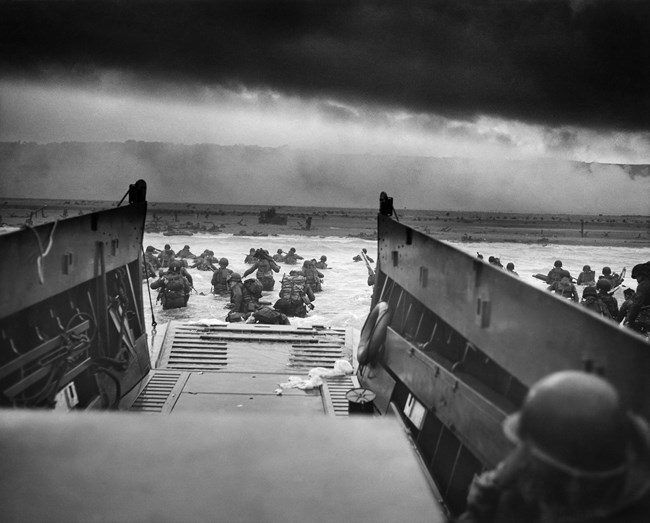Last updated: June 3, 2019
Article
D-Day 75th Anniversary

National Archives and Records Administration, Chief Photographer's Mate Robert F. Sargent
Cornelius Ryan wrote the book, The Longest Day, about D-Day. The title reflects the experience of the June 6 invasion force. Allied ships left the night of June 5th to transport troops, sweep mines, and bomb German defenses. By 2:30 a.m., soldiers boarded small landing craft that would travel 11 miles to the French beaches. About the time the ships left port, airborne troops took flight. They parachuted into the Normandy countryside between midnight and 2 a.m. Through the night, thousands of planes bombed enemy fortifications. By 6:30 a.m. soldiers were pouring onto beaches code named Omaha, Utah, Sword, Gold, and Juno. Allied troops fought the Germans all day, paying a heavy price. Of the 10,000 Allied casualties on D-Day, 2,499 of the dead were American. Twenty five of the gold stars on the World War II Memorial’s “Freedom Wall” represent these men. The bloodshed bought the Allies a vital foothold in Nazi occupied Europe. D-Day would lead to the defeat of Nazi Germany in less than a year.

Library of Congress Prints and Photographs Division, U.S. Army Photo
